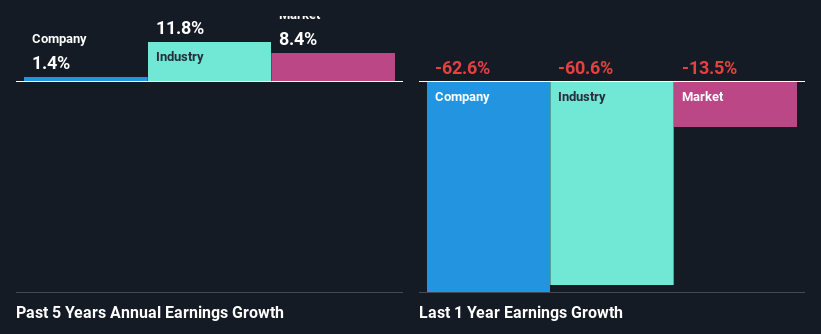Do Its Financials Have Any Role To Play In Driving Third Age Health Services Limited's (NZSE:TAH) Stock Up Recently?
Most readers would already be aware that Third Age Health Services' (NZSE:TAH) stock increased significantly by 20% over the past three months. Given that stock prices are usually aligned with a company's financial performance in the long-term, we decided to study its financial indicators more closely to see if they had a hand to play in the recent price move. Specifically, we decided to study Third Age Health Services' ROE in this article.
Return on equity or ROE is a key measure used to assess how efficiently a company's management is utilizing the company's capital. In other words, it is a profitability ratio which measures the rate of return on the capital provided by the company's shareholders.
Check out our latest analysis for Third Age Health Services
How Is ROE Calculated?
The formula for return on equity is:
Return on Equity = Net Profit (from continuing operations) ÷ Shareholders' Equity
So, based on the above formula, the ROE for Third Age Health Services is:
16% = NZ$412k ÷ NZ$2.5m (Based on the trailing twelve months to March 2023).
The 'return' is the income the business earned over the last year. One way to conceptualize this is that for each NZ$1 of shareholders' capital it has, the company made NZ$0.16 in profit.
What Has ROE Got To Do With Earnings Growth?
We have already established that ROE serves as an efficient profit-generating gauge for a company's future earnings. Depending on how much of these profits the company reinvests or "retains", and how effectively it does so, we are then able to assess a company’s earnings growth potential. Generally speaking, other things being equal, firms with a high return on equity and profit retention, have a higher growth rate than firms that don’t share these attributes.
A Side By Side comparison of Third Age Health Services' Earnings Growth And 16% ROE
At first glance, Third Age Health Services seems to have a decent ROE. On comparing with the average industry ROE of 8.7% the company's ROE looks pretty remarkable. However, we are curious as to how the high returns still resulted in flat growth for Third Age Health Services in the past five years. Based on this, we feel that there might be other reasons which haven't been discussed so far in this article that could be hampering the company's growth. These include low earnings retention or poor allocation of capital.
Next, on comparing with the industry net income growth, we found that Third Age Health Services' reported growth was lower than the industry growth of 12% over the last few years, which is not something we like to see.
The basis for attaching value to a company is, to a great extent, tied to its earnings growth. What investors need to determine next is if the expected earnings growth, or the lack of it, is already built into the share price. This then helps them determine if the stock is placed for a bright or bleak future. One good indicator of expected earnings growth is the P/E ratio which determines the price the market is willing to pay for a stock based on its earnings prospects. So, you may want to check if Third Age Health Services is trading on a high P/E or a low P/E, relative to its industry.
Is Third Age Health Services Using Its Retained Earnings Effectively?
The high three-year median payout ratio of 73% (meaning, the company retains only 27% of profits) for Third Age Health Services suggests that the company's earnings growth was miniscule as a result of paying out a majority of its earnings.
In addition, Third Age Health Services only recently started paying a dividend so the management must have decided the shareholders prefer dividends over earnings growth.
Summary
On the whole, we do feel that Third Age Health Services has some positive attributes. Although, we are disappointed to see a lack of growth in earnings even in spite of a high ROE. Bear in mind, the company reinvests a small portion of its profits, which means that investors aren't reaping the benefits of the high rate of return. Until now, we have only just grazed the surface of the company's past performance by looking at the company's fundamentals. To gain further insights into Third Age Health Services' past profit growth, check out this visualization of past earnings, revenue and cash flows.
Have feedback on this article? Concerned about the content? Get in touch with us directly. Alternatively, email editorial-team (at) simplywallst.com.
This article by Simply Wall St is general in nature. We provide commentary based on historical data and analyst forecasts only using an unbiased methodology and our articles are not intended to be financial advice. It does not constitute a recommendation to buy or sell any stock, and does not take account of your objectives, or your financial situation. We aim to bring you long-term focused analysis driven by fundamental data. Note that our analysis may not factor in the latest price-sensitive company announcements or qualitative material. Simply Wall St has no position in any stocks mentioned.

 Yahoo Finance
Yahoo Finance 
